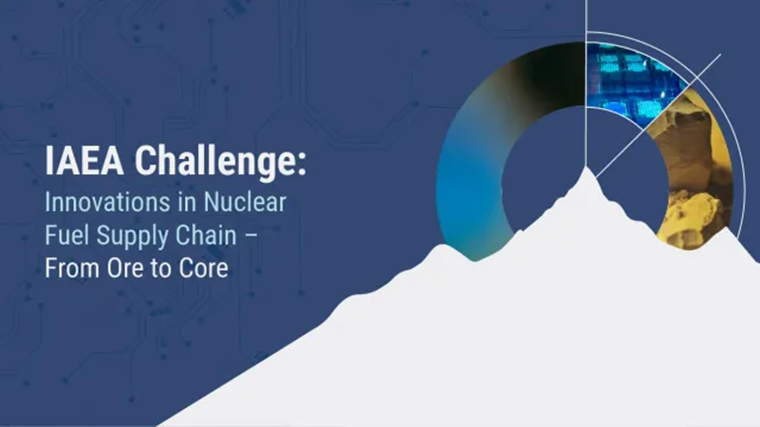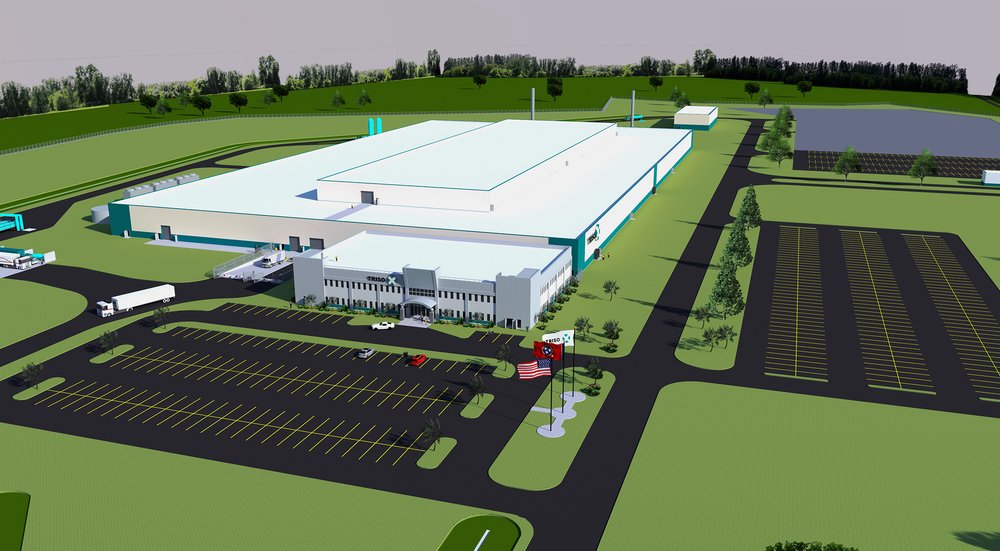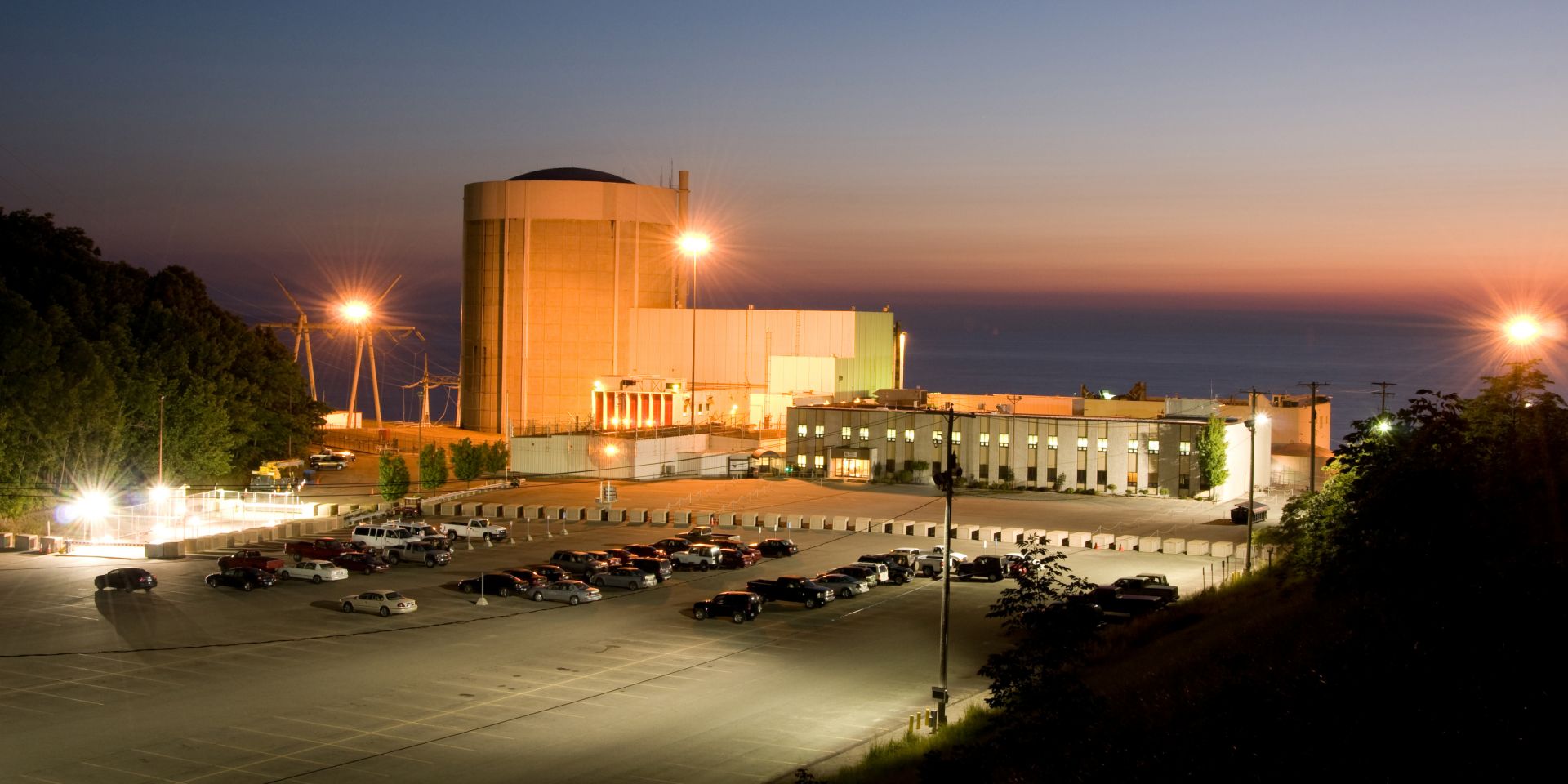Concept art of the proposed TRISO-X TX-1 fuel facility in Oak Ridge, Tenn. (Image: X-energy)
Due to the days lost to the government shutdown, the Nuclear Regulatory Commission has extended the public comment period for a draft environmental impact statement for the TX-1 advanced nuclear fuel fabrication facility being built in Oak Ridge, Tenn.
Work starts on X-energy’s advanced fuel fabrication facility in Oak Ridge, Tenn. (Photo: X-energy)
Small modular reactor developer X-energy and its subsidiary TRISO-X announced yesterday the start of aboveground construction for its TX-1 advanced nuclear fuel fabrication facility in Oak Ridge, Tenn. The first-in-the-nation facility will be the first of two Oak Ridge facilities built to manufacture the company’s TRISO fuel for use in its Xe-100 SMR.
JNFL’s Rokkasho uranium enrichment plant. (Photo: JNFL)
President Trump is in Japan today, with a visit with new Prime Minister Sanae Takaichi on the agenda. Takaichi, who took office just last week as Japan’s first female prime minister, has already spoken in favor of nuclear energy and of accelerating the restart of Japan’s long-shuttered power reactors, as Reuters and others have reported. Much of the uranium to power those reactors will be enriched at Japan’s lone enrichment facility—part of Japan Nuclear Fuel Ltd.’s Rokkasho fuel complex—which accepted its first delivery of fresh uranium hexafluoride (UF₆) in 11 years earlier this month.
The Palisades nuclear power plant. (Photo: Holtec)
Palisades nuclear power plant has received its first fuel shipment, a key step ahead of its highly anticipated restart by the end of the year.
Located in Covert Township, Mich., Palisades will be the first U.S. nuclear facility to restart after being slated for decommissioning. The Crane Clean Energy Center, formerly Three Mile Island-1, is the next decommissioned nuclear reactor to be resurrected, with an expected restart by 2027.
Urenco USA staff outside the Eunice, N.M., enrichment facility. (Photo: Urenco)
The Nuclear Regulatory Commission has authorized Urenco USA to enrich uranium up to 10 percent U-235 following changes to plant systems and procedures and an operational readiness review. The company announced the news today, two days after the NRC issued its authorization on September 30 and said that all existing and future cascades at its Eunice, N.M., enrichment facility will be licensed to produce both low-enriched uranium, typically enriched to 5 percent fissile U-235, and LEU+, between 5 and 10 percent U-235.
Centrus employees maneuver a cylinder at the American Centrifuge Plant in Piketon, Ohio. (Photo: Centrus Energy)
Centrus Energy announced a plan yesterday to add 300 new jobs at Centrus’s uranium enrichment plant in Piketon, Ohio, “in advance of federal funding decisions.” The company envisions adding capacity for both low-enriched uranium and high-assay low-enriched uranium production at its American Centrifuge Plant, but the “size and scope” of public and private investment is “subject to being selected for funding by the U.S. Department of Energy.”
BWXT’s Centrifuge Manufacturing Development Facility, currently under construction in Oak Ridge, Tenn., will provide the centrifuges that will be used at the future DUECE pilot plant. (Photo: BWXT)
The Department of Energy’s National Nuclear Security Administration has awarded BWX Technologies a contract valued at $1.5 billion to build a Domestic Uranium Enrichment Centrifuge Experiment (DUECE) pilot plant in Tennessee in support of the administration’s efforts to build out a domestic supply of unobligated enriched uranium for defense-related nuclear fuel.
Oklo’s proposed Advanced Fuel Center in Tennessee. (Image: Oklo)
Late last week saw two announcements from companies working to recycle used nuclear fuel on a commercial scale, providing welcome news to anyone hoping to see the United States move to unlock the hidden potential of the more than 94,000 metric tons of spent fuel stored at power plant sites around the country.
Kairos Power’s fluoride salt–cooled high-temperature Reactor (KP-FHR) uses TRISO fuel embedded in annular graphite pebbles roughly the size of a golf ball. (Photo: Kairos Power)
Kairos Power and BWX Technologies announced today that they will work together to “collaboratively explore” optimizing commercial production of TRISO fuel for Kairos’s planned advanced reactor fleet—beginning with the 50-MWe Hermes 2, slated for operation in 2030—and other potential customers. Their collaboration could include jointly developing a TRISO fuel fabrication facility.
Fuel rods were delivered to PNNL in late June 2025 in a 30-ton canister. (Photo: Andrea Starr/PNNL)
Eleven high-burnup fuel rods manufactured by Global Nuclear Fuel have been delivered to Pacific Northwest National Laboratory for a battery of destructive tests. PNNL’s evaluation will provide GNF and the Department of Energy with information about the performance of the fuel, which—like other fuels developed through the DOE’s Accident Tolerant Fuel program— was engineered to handle longer operating cycles, improve fuel cycle economics, and support power uprates for existing light water reactors.
Uranium hexafluoride cylinders stand in a cylinder yard at the Paducah site. (Photo: DOE)
The Department of Energy’s Office of Environmental Management announced it has signed a lease with General Matter for the reuse of a 100-acre parcel of federal land at the former Paducah Gaseous Diffusion Plant in Kentucky for a new private-sector domestic uranium enrichment facility.
H Canyon under construction in the early 1950s (left) and in 2010. (Photos: Savannah River Site)
From 2003 to 2011, staff at the Department of Energy’s Savannah River Site downblended high-enriched uranium in the site’s H Canyon, producing over 300 metric tons (MT) of low-enriched uranium that was fabricated into fuel. The facility has since been idled, but downblending could soon begin again—this time to high-assay low-enriched uranium (HALEU).















